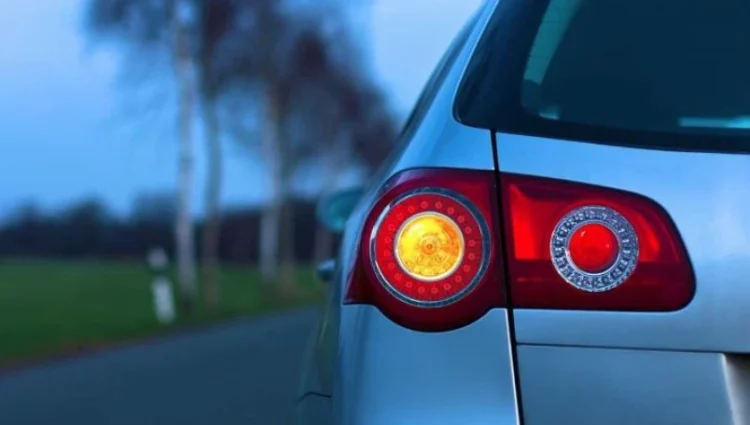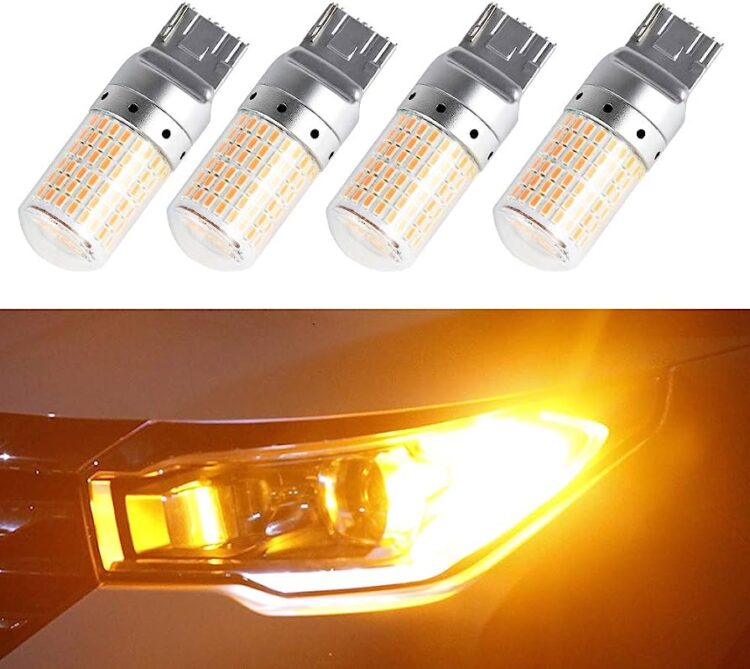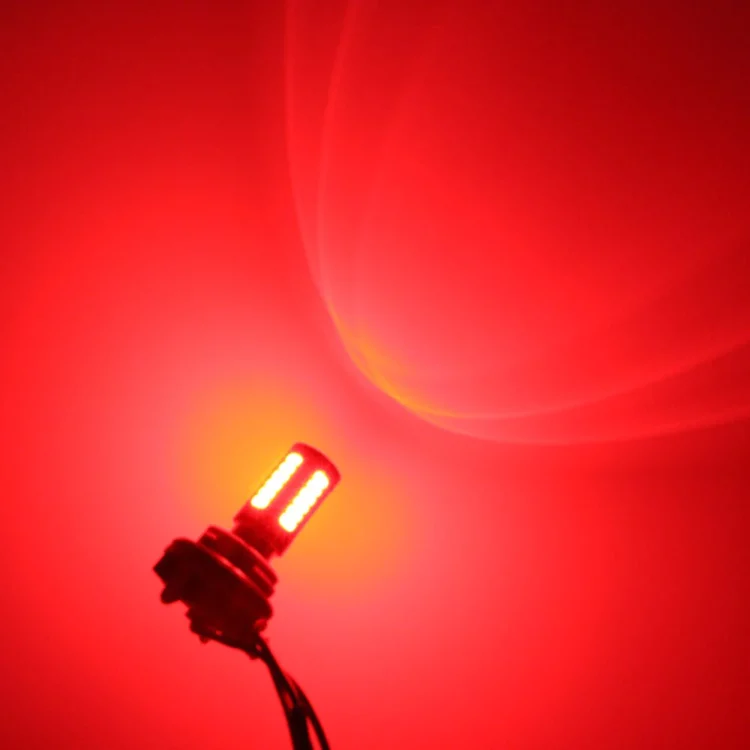In today’s fast-paced world, where technological advancements are transforming various aspects of our lives, the automotive industry is also undergoing a significant evolution. One crucial area of innovation is automotive lighting, which plays a vital role in ensuring safety and effective communication on the road. In this blog post, we will delve into the future of automotive lighting, focusing specifically on LED turn signal light bulbs.
Introduction to LED Turn Signal Light Bulbs
LED, or Light Emitting Diode, technology has transformed the automotive lighting landscape. Turn signal light bulbs are constructed using semiconductor materials that emit light when an electrical current passes through them. This technology differs significantly from traditional bulbs as it does not rely on a filament that can burn out or break.
The advantages of LED turn signal light bulbs over traditional bulbs are numerous. Firstly, these bulbs produce brighter and clearer illumination, allowing drivers to communicate their intentions more effectively. Additionally, the new technology enables faster response times, improving safety by reducing the delay between signaling and the actual illumination of the lights. This rapid response time can make a crucial difference in situations where split-second decisions matter.
Improved Visibility and Safety

Enhanced visibility is one of the key benefits offered by LED turn signal light bulbs. The brighter illumination provided by them ensures that drivers can easily spot the signaling vehicle, even in adverse weather conditions or during the daytime. Moreover, the clarity of the LED turning signal light helps eliminate any ambiguity in signaling, reducing the chances of misinterpretation by other road users.
The faster response time of LED turn signal light bulbs also contributes to improved safety. When a driver activates the turn signal, the bulbs illuminate almost instantly, providing timely notification to nearby vehicles and pedestrians. This swift reaction time allows other road users to respond appropriately, promoting safer driving practices and minimizing the risk of accidents.
Energy Efficiency and Durability
LED turn signal light bulbs offer substantial energy efficiency benefits compared to traditional bulbs. LEDs require less power to generate the same level of brightness, resulting in reduced power consumption by the vehicle’s electrical system. This energy efficiency translates into improved fuel efficiency for vehicles, contributing to environmental sustainability and cost savings for drivers.
In addition to energy efficiency, these bulbs exhibit exceptional durability. Unlike incandescent or halogen bulbs that are prone to filament breakage or burnout, this technology is solid-state, making the bulbs highly resistant to shock and vibration. LED turn signal lights can withstand harsh road conditions and last significantly longer, reducing the need for frequent replacements.
Design Flexibility

LED technology offers unparalleled design flexibility for turn signal lights. Unlike traditional bulbs that are limited in shape and size, these can be manufactured in various shapes and sizes to accommodate diverse vehicle designs. This flexibility allows automakers to incorporate turn signal lights seamlessly into the overall aesthetics of the vehicle.
Moreover, LED turn signal lights can be arranged in different configurations, enabling manufacturers to create innovative lighting designs. From sleek and minimalistic designs to more elaborate and eye-catching patterns, this technology opens up a world of possibilities for designers to enhance the visual appeal of vehicles while ensuring optimal functionality.
Enhanced Aesthetics and Styling
Beyond the functional benefits, LED turn signal light bulbs can contribute to the overall aesthetics and styling of a vehicle. Their use allows for precise control of light output, enabling automakers to create unique lighting signatures for their brands or specific vehicle models.
LED technology also allows for dynamic lighting effects, such as sequential turn signals or sweeping patterns. These captivating lighting features not only enhance the visual appeal of vehicles but also provide an additional level of communication to other road users, making driving safer and more engaging.
Integration with Advanced Technology

As vehicles become more technologically advanced, the integration of LED turn signal light bulbs with other automotive systems offers exciting possibilities. The technology in question can be seamlessly integrated with adaptive lighting systems, which adjust the direction and intensity of headlights based on road conditions and driver inputs.
Furthermore, the named turn signal lights can be connected to a vehicle’s network, allowing for advanced communication capabilities. For example, vehicles equipped with connected lighting systems can share information about their intended maneuvers with nearby vehicles, enabling a higher level of coordination on the road.
Regulatory Standards and Compliance
When it comes to automotive lighting, adhering to regulatory standards and requirements is of paramount importance. LED turn signal light bulbs must meet specific safety and performance standards to ensure proper functionality. These standards govern factors such as brightness, color, visibility, and compatibility with other lighting components.
Manufacturers and consumers alike should prioritize choosing these turn signal lights that comply with the relevant regulations. By doing so, they can ensure that the lights meet the necessary quality standards, thereby maximizing safety and avoiding potential legal issues.
Challenges and Limitations

While LED turn signal light bulbs offer numerous advantages, there are also challenges and limitations to consider. One significant consideration is the cost. LED technology, although becoming more affordable over time, may initially present a higher upfront cost compared to traditional bulbs.
Compatibility with existing vehicle systems is another factor to consider. Some vehicles may require additional modifications or adapters to accommodate LED turn signal light bulbs. It’s crucial for consumers to research and ensure that the bulbs they choose are compatible with their specific vehicle make and model.
Industry Trends and Adoption
The adoption of LED turn signal light bulbs in the automotive industry has been steadily increasing in recent years. Vehicle manufacturers are recognizing the benefits and incorporating LED technology into their designs. For example, many high-end luxury vehicles now come equipped with LED turn signal lights as a standard feature, showcasing the industry’s confidence in this lighting technology.
Furthermore, several countries and regions have introduced regulations that encourage or mandate the use of LED lighting in vehicles due to its superior efficiency and safety features. As the technology continues to evolve and become more accessible, it is expected that LED turn signal light bulbs will become commonplace in vehicles of all price ranges.
Consumer Considerations and Benefits
For consumers considering LED turn signal light bulb upgrades, there are several benefits to take into account. Firstly, LED bulbs significantly improve safety on the road by providing enhanced visibility and faster illumination. The clear and bright light output ensures that other drivers can easily interpret the signaling intentions, reducing the risk of accidents.
Secondly, the energy efficiency of LED turn signal light bulbs contributes to lower fuel consumption and reduced environmental impact. By using less power, these bulbs help conserve energy resources and lower greenhouse gas emissions. Additionally, the long lifespan and durability of LED bulbs mean fewer replacements, saving both money and time for vehicle owners.







